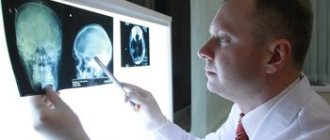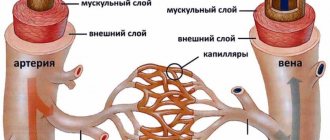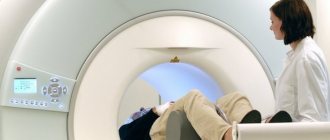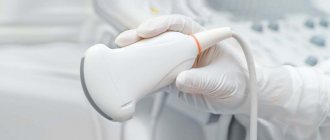In a healthy body, blood circulates freely. The arterial and venous systems, which are found throughout the body, including the central nervous system (CNS), are responsible for this. To ensure proper functioning of the central nervous system, both sufficient arterial inflow, which ensures the delivery of oxygen and nutrients necessary for the proper functioning of the brain, and venous outflow, which removes metabolic products from the central nervous system, are important. Metabolism in the nervous system is much faster than in most tissues of the body. Therefore, ensuring proper and sufficient blood flow is important for health.
What is the threat of the disease?
Venous discirculation is conventionally divided into 3 stages:
- Latent. Accompanied by minor symptoms such as moderate headache, poor sleep. Often the patient refers to fatigue and does not consult a specialist.
- Cerebral dystonia. This stage is accompanied by an increase in the intensity of headaches, vomiting, insomnia, and fainting may occur.
- Venous encephalopathy. The onset of this stage means that some processes may become irreversible: vision and hearing deteriorate, and epileptic seizures occur. Urgent medical attention is required.
Even at the initial stage, a violation of the venous outflow to the brain means that the brain cells are not sufficiently supplied with blood, so treatment should not be delayed. The longer the brain is “without nutrition”, the more difficult it will be to reverse the symptoms of the disease.
Options for the development of the disease can be:
- Hand tremors;
- epilepsy;
- VSD (vegetative-vascular dystonia);
- muscle tissue atrophy;
- hydrocephalus;
- increased intracranial pressure;
- cardiovascular diseases;
- coma;
- stroke.
IMPORTANT! If left untreated, venous discirculation can cause death, so if alarming symptoms occur, you should consult a specialist.
Diseases that can provoke the development of pathology
There are a number of diseases that can provoke the appearance of venous dysgemia in a child:
- Stenosis. A characteristic phenomenon of pathology is vasoconstriction, due to which the veins gradually begin to collapse. As a result, the natural process of blood outflow is disrupted, and vein blockage develops. It is incredibly difficult to identify the problem, since narrowing of blood vessels by less than half does not give any unpleasant symptoms.
- Deformation of organs that impede normal blood flow, pinching of valves or bridges. In such a situation, the direction of blood flow may be changed. It happens that a child is already born with an abnormal structure of the venous system - complete or partial closure of blood vessels.
- Even diseases completely unrelated to the blood flow can provoke venous dysgemia - problems in the spine, the presence of cancerous tumors, or previous trauma suffered by the child.
- Not the last place on the list is occupied by bad habits - overeating, teenage smoking, drinking alcoholic beverages.
- Osteochondrosis, as well as pathologies of the thyroid gland, are not the cause of improper venous outflow. These problems become a consequence of such a problem.
Symptoms of venous dysgemia sometimes appear immediately after the baby is born due to problems that appear during the perinatal period of fetal development.
Anatomical features
To understand the disease, it is important to understand the anatomy. Knowing the features of the structure of all parts of the head, both hemispheres of the brain and blood vessels, it will become easier to even identify this disease.
The venous wall of the brain does not have a valve apparatus, which is why the blood disperses freely through all adjacent vessels on different sides of the head. Almost all of them are located at a distance from each other and from the arteries. Venous sinuses are intermediate points for blood with cerebrospinal fluid from the ventricles. Vessels emerge from them. They come in two types: superficial and deep. The first are located inside the pia mater in the interlobar grooves; they are responsible for the flow of blood from the cerebral cortex to the cerebellum. The latter are formed due to the white matter with subcortical nodes.
Diploic and emissary veins are also distinguished, which conduct blood flow to the sinuses and are responsible for the connection between the superficial and deep vessels. There are also extracranial veins that provide blood supply to certain areas of the brain. In this case, all the vessels are intertwined into one, called a tank. Through it, blood flows to the central part of the brain, many sinuses and the basal plexus.
For the stable functioning of blood circulation, intervenous and intersinus anastomoses are of great importance. At the exit from the brain near the neck, three plexuses are formed: the foramen ovale of the skull, the canals of the hypoglossal nerve and the carotid artery.
Diagnostics
Based on the examination results, the specialist prescribes treatment for blood vessels and veins. The doctor examines the patient, inquires about symptoms and complaints. If there is doubt about the diagnosis, the patient is referred to procedures such as:
- Why is a study of the blood vessels of the brain and neck performed?
- Magnetic resonance imaging.
- Ultrasound examination of cerebral vessels.
- CT scan.
- Angiography of cerebral vessels.
These examinations help to establish the root cause of the disturbance in the venous outflow of blood in the brain area.
If, as a result of the examination, the patient is found to have abnormalities in the area of the jugular vein, this can cause pronounced symptoms that provoke discomfort, the development of other diseases, and the occurrence of pathologies of the brain and venous outflow. During diagnosis, the eyeball must be examined, as blood stagnation may occur there.
In most cases, the disease (venous drainage of the brain) is accompanied by venous expansion in the legs, so complex treatment is carried out. The patient is prescribed medications and various exercises.
Signs
Obvious signs of venous discirculation are varied. They are in many ways similar to other ailments and often worsen in the morning:
- Dull pain in the head.
- Feeling of lethargy and weakness, a weak body even after proper rest; difficult to get out of bed.
- Deterioration of condition before changes in atmospheric conditions.
- Tingling in different parts of the body.
- Decreased visual acuity, the appearance of spots and floaters in the visual field.
- Swelling of the eyelids.
- Blueness and swelling of the nasolabial triangle.
- When coughing, flushing of the facial skin may develop.
- Frequent fainting.
- Expansion of the network of blood vessels in the fundus.
- Loss of coordination, dizziness - this is especially common if blood stagnation is localized in the VBB (in the vertebrobasilar region).
- Epileptic seizures.
- Nausea.
- Speech or swallowing may be impaired (if the pathology affects the vertebrobasilar region).
Treatment methods
Depending on the speed of the disease and the patient’s well-being, the following treatment methods may be prescribed:
- Medicines;
- physiotherapy;
- massage of the collar area and back;
- physical therapy (physical therapy);
- acupuncture;
- special diet.
Treatment is carried out using one of the listed methods, or in combination.
Drug therapy
Drug therapy is based on the patient taking venotonic drugs. They help improve blood circulation. The doctor prescribes drugs such as: Detralex, Tanakan, Vinpocetine, Asniton, Phezam. Diuretics may also be prescribed to relieve swelling in the face and neck.
ATTENTION! The drugs are selected individually and strictly as prescribed by the doctor.
Physiotherapy
In addition to taking medications, physical therapy can help you feel better. A general practitioner or neurologist may prescribe:
- Electrophoresis;
- Valerian masks;
- Magnetotherapy;
- Laser therapy;
- Electrical stimulation.
The effectiveness of physiotherapy has been tested for decades, and compared to medicinal treatments, it is a more “gentle” method.
- The best methods for treating impaired venous outflow in cervical osteochondrosis
Medication and physical therapy can be prescribed in combination.
Massage
Massage of the collar zone is prescribed to a patient with venous stagnation quite often. Massage is prescribed only in the absence of acute inflammation , otherwise this procedure can become extremely painful and harm the patient’s health.
Massage helps improve blood circulation, relieve muscle tension, and eliminate pain. It is advisable that the procedure be performed by an experienced massage therapist or chiropractor. The massage course lasts no more than 10 days.
Self-massage is also possible, 2-3 times a day: light stroking in the direction from the base of the neck to the head. Circular movements are also made from bottom to top to improve blood flow.
Exercise therapy: effective exercises
Therapeutic exercise is prescribed to a patient if there is a violation of the outflow in the brain, if there are no other contraindications and acute pain symptoms are relieved with the help of medications. Exercise therapy is aimed at strengthening the neck muscles and is initially performed in a sitting position to avoid dizziness and fainting.
Effective exercises to improve blood flow include:
- Smooth circular rotations of the head;
- tilts back and forth, left and right;
- turns the head and neck left and right.
REFERENCE. A course of exercise therapy can be taken at a specialized medical center, where a physical therapy doctor will select the necessary set of exercises, because to improve well-being it is necessary to strengthen the entire body as a whole.
Treatment of vertebrogenic causes
Vertebrogenic headache (cervicocranialgia) is associated with the presence of SCH. The muscles of the neck and back are subject to tension and therefore pain occurs.
The causes of vertebrogenic headaches can be severe physical exertion, injuries to the back muscles, and as a result, protrusions, prolapses or hernias in the intervertebral discs.
- Hemorrhagic cerebral stroke: what it is, symptoms and consequences
The main symptom of vertebrogenic headaches is a noticeable limitation of movements of the head or neck, as well as pain that occurs when palpating areas of the neck.
Treatment is achieved with medications, and after acute symptoms are relieved using the above methods of restorative treatment.
Self-medication for cervicocranialgia is unacceptable!
The course of therapy is prescribed by a neurologist or vertebrologist.
IMPORTANT INFORMATION! Massage for cervicocranialgia can lead to a deterioration in well-being and is prescribed only at the rehabilitation stage.
Phytotherapy
When a child has venous dysgemia in the area of the spinal plexuses, the doctor prescribes healing baths. Viburnum berries, sage herbs, chamomile or elderberry are added to the water.
Other recommendations
The baby, when he realizes what is happening to him, needs to be taught to lead an active lifestyle. The harm of certain habits must be explained to him so that he understands that they are dangerous to his life. The child should be taught to play sports.
Running and long walks help overcome venous dysgemia. It is useful to introduce a teenager to yoga. But as the disease progresses, medical consultation is required to help optimize the expected physical activity. It is better not to visit the sauna, since a sharp change in temperature, despite the stimulation of blood flow, negatively affects blood vessels that are weakened by the disease.
How to improve venous drainage of the brain
To improve venous outflow from the brain when it is dysfunctional, medications (Actovegin, Detralex), neck exercises, massage, diet with limited salt and sufficient intake of dietary fiber, medicinal plants, leeches, and physiotherapy are used. It is important to monitor working conditions.
Treatment with drugs
To treat circulatory disorders in the veins of the brain, drugs from the following groups are used:
Exercises
For dysfunctional venous congestion, a set of exercises for the neck is useful ; it can be done even at your desk:
- lowering your shoulders down, try to reach the top of your head towards the ceiling, relax and repeat 10 times;
- tilting the head to the shoulder, while trying not to bend the neck, but stretching it as far as possible to the side (10 times to the right and left);
- pushing the chin forward (snake head) and pulling the back of the head back with a delay of 10 counts in each final position;
- turning the head to the sides with the shoulders lowered as much as possible (10 repetitions each);
- pull your shoulders towards your ears, and then with a sharp movement throw them down 10 times.
Expert opinion Alena ArikoExpert in the field of cardiology With venous dysfunction of the brain, headstand exercises, heavy lifting, and hanging on rings are contraindicated. All movements should be smooth, without jerking.
- Cerebral angiodystonia - a violation of cerebral vascular tone
Massage
Massage of the cervical-collar area is considered effective to improve venous outflow. It is better if it is carried out by a specialist, but to relieve headaches and heaviness in the head, several techniques can be done independently:
- use your fingers to move in the direction from the forehead to the neck with intense pressure on the skin 3 times, as if moving it back;
- perform stroking from the back of the head to the shoulders (from the center to the sides) 5 times;
- stretch and knead the back of the neck from top to bottom (3 times) and from the center to the sides (3 times);
- tap with the tips of 4 fingers from the crown to the back of the head and along the shoulders;
- repeat the first movement, but without effort.
Nutrition
It is necessary to exclude from the diet foods that retain fluid in the body:
- pickles,
- marinades,
- smoking,
- sausages,
- hot sauces,
- fried foods.
Table salt is limited to 5 g per day. This means that you need to cook without it, and add salt to the already prepared dish. It is useful to replace the table with pink Himalayan. To improve blood flow, the diet should include:
- proteins – low-fat dairy, meat and fish products;
- vegetables with coarse fiber - cabbage, pumpkin, beets, fresh salads;
- black bread, bran;
- fruits, berries;
- dried fruits – prunes, dried apricots;
- drinking water – no more than 1.5 liters, it should be drunk in small portions.
If you are prone to constipation, kefir or fresh yogurt is recommended before bed; it is better to prepare them at home using pharmacy starters.
To enhance the laxative effect, an hour before taking, you can add a mixture of a teaspoon of bran and 4 prunes (they are pre-steamed with boiling water for 30 minutes).
Traditional methods
To treat venous dysfunction in the brain, a collection of herbs is used:
- crushed chestnut fruits 50 g,
- raspberry leaf 20 g,
- peony flowers 20 g,
- horsetail herb 10 g.
A tablespoon of the mixture is poured into a glass of boiling water and cooked in a water bath for 30 minutes, and then left for 1.5 hours. After straining, take 50 ml half an hour before meals 4 times a day for 45 days. After a 15-day break, the course can be repeated.
Hirudotherapy
For cyanotic skin and severe venous stagnation, hirudotherapy is used - leeches are placed on the occipital and retroauricular area. Prescribe 5-7 sessions 2 times a week. The secretion of the salivary glands of leeches contains hirudin, which:
- reduces blood viscosity;
- improves nutrition of brain cells;
- reduces swelling;
- accelerates the movement of blood through veins and arteries;
- relieves pain.
Physiotherapy
To treat dysfunction of the venous outflow in the brain, the following is used:
- phonophoresis (ultrasonic injection) of Troxevasin ointment on the collar area;
- galvanic collar;
- laser and magnetic therapy;
- hydrogen sulfide, carbon dioxide baths.
The high effectiveness of sanatorium-resort treatment has been proven, since physical and climatic conditions are used simultaneously.









